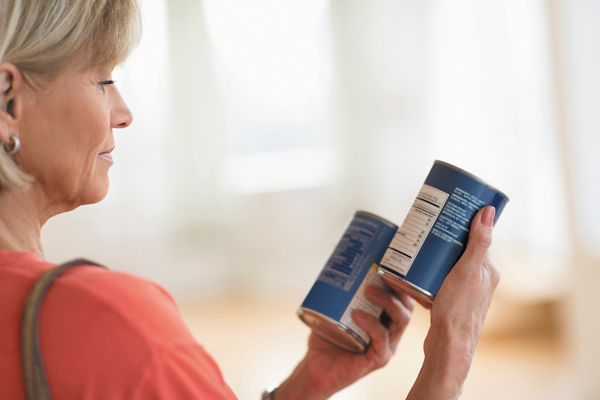
Respiratory health harms often follow flooding: Taking these steps can help

Tips to leverage neuroplasticity to maintain cognitive fitness as you age

Can white noise really help you sleep better?

Celiac disease: Exploring four myths

What is prostatitis and how is it treated?

What is Cushing syndrome?

Exercises to relieve joint pain

Think your child has ADHD? What your pediatrician can do

Foam roller: Could you benefit from this massage tool?

Stepping up activity if winter slowed you down
Staying Healthy Archive
Articles
Is eating dried fruit healthy?
Ask the doctor
Image: lola1960/iStock
Q. I love dried fruit and thought it was healthy. But I hear that you gain a lot of weight eating dried fruit, which is not healthy. What's the truth?
A. The truth is that the actress and comedian Mae West was wrong when she allegedly said "Too much of a good thing ... can be wonderful!" Food contains calories, and eating too many calories-even of healthy foods-leads to weight gain. But there are healthy calories and unhealthy ("empty") calories, and fruit is a healthy source of calories. That's as true of dried fruit as fresh fruit.
Why will the new food labels highlight added sugars?
The new Nutrition Facts labels will list “added sugars” in a serving of food. Until the labels appear, one should look for sugars such as dextrose and sucrose on a label’s list of ingredients.
Easy ways to build better bones
Strength training, weight-bearing exercise, a healthy diet, and medication can help.
Image: Tatomm/iStock
An estimated 10 million people in the United States are coping with the brittle, fragile bones of osteoporosis—a disorder that causes severe bone loss. It's most common in women, and the risk is higher in those who are thin, age 50 or older, or of Caucasian or Asian descent. It also occurs in men, who make up about 20% of osteoporosis cases. The condition puts a person at a high risk for bone fractures, disability, loss of independence, and even death. That's why it's important to make your bones as strong as possible. "There are many ways to build bone mass, and the people who do tell us they feel stronger and more capable on their feet," says Rachel Wilson, a physical therapist at Harvard-affiliated Brigham and Women's Hospital.
There isn't one magic way to build bone mass. It takes a number of the following strategies.
How to avoid the health risks of too much salt
Stick to fresh foods, and fill your salt allotment from healthy sources like whole-grain breads.
Image: Michael Carroll Photography
As we reported in August 2016, the FDA is encouraging the food industry to cut back on added sodium in commercially processed and prepared food. It's a good reminder for all of us that too much salt in the diet is risky for health. How much is too much? "It's controversial, although I don't think anyone is in favor of unlimited salt intake," says Dr. Randall Zusman, a cardiologist with Harvard-affiliated Massachusetts General Hospital.
Salt risks
How much is too much?
So what's the controversy about? It centers on how much salt is safe for consumption, and it's still being debated. The American Heart Association recommends a limit of 1,500 milligrams (mg) per day. The FDA recommends a limit of 2,300 mg of sodium per day. The U.S. Dietary guidelines used to recommend a limit of 1,500 mg per day for a wide swath of people (everyone 51 and older, all African Americans, and anyone with high blood pressure, kidney disease, or diabetes), but this year changed it to 1,500 mg per day only for people with high blood pressure, and 2,300 mg for everyone else.
Common sources of sodium
What you should do
It's best to avoid processed food. Choose fresh, frozen (no sauce or seasoning), or no-salt-added canned vegetables, and opt for fresh poultry, seafood, and lean meat, rather than processed meat and poultry.
Krivitsky recommends limiting sodium to 500 or 600 mg per meal, and making sure it comes from healthy sources, like whole-grain breads and cereals.
How can you find out about sodium content? Start reading Nutrition Facts labels. You really can find low-sodium options. For example, one cup of Post Shredded Wheat has no sodium, and half a cup of Prego No Salt Added pasta sauce has just 40 mg of sodium.
Krivitsky also recommends ditching saltshakers and flavoring food instead with spices, such as cumin, rosemary, basil, ginger, or dill; flavored vinegars; and lime or lemon juice. "Low salt doesn't mean less flavor," points out Krivitsky. "It just means less salt."
How about a salt substitute?When you want to add something salty to food, a salt substitute may do the trick. Substitutes are made from potassium chloride, which is similar to table salt (sodium chloride). Substitutes fall into two categories: low-sodium or "light" salt, which replaces up to half of the sodium chloride with potassium chloride, and no-sodium or "salt-free" salt, which contains only potassium chloride. For some people, potassium chloride can leave a bitter aftertaste. People with certain types of heart or kidney disease, or taking certain potassium-retaining medicines, may be told to avoid potassium-based substitutes. For others, potassium chloride is advisable: it not only helps avoid excess sodium, but also helps lower blood pressure. |
Treatment options for obstructive sleep apnea
A range of choices may help you get a better night's sleep.
Image: Courtsey of Carpenter Co.
When the doctor says you have obstructive sleep apnea (OSA), you'll likely hear about the gold standard in treatment: continuous positive airway pressure (CPAP), which uses forced air, pushed through a tube connected to a face mask, to keep your airway unblocked. Yet many people have trouble adjusting to a bulky CPAP mask. "We often see people who say they tried CPAP and didn't like it, and now it's been years since they've had treatment," says Dr. Stuart Quan, the Gerald E. McGinnis professor of sleep medicine at Harvard Medical School.
You may be able to adjust to CPAP by trying relaxation exercises, practicing wearing the mask during the day, and gradually increasing CPAP pressure. But if it doesn't work out, you do have alternatives.
5 ways to give the gift of health
Look for gadgets or services that get people moving.
Image: DeathToStockPhotos
During the holidays, or at any time of year, a gift that benefits health can have a lasting impact. It may be especially helpful to someone who wouldn't normally purchase such an item or doesn't know about available options. A few guidelines to keep in mind: "The gift should be easy to use. Consider the receiver's interests, and accommodate previous injuries, surgeries, medical conditions, or functional limitations," says Dr. Clare Safran-Norton, a physical therapist at Harvard-affiliated Brigham and Women's Hospital.
1. Services
2. Gadgets
A wearable fitness monitor is helpful to track everything from heart rate to the number of steps walked per day. The majority cost between $50 and $200, and you'll find them at big box stores and sports retailers. An automatic pill dispenser makes sticking to a medication regimen easier for someone who takes several pills daily. The devices are available in drugstores and online. Prices start at about $50.
3. Workout equipment
4. Classes
An exercise class makes a good gift, especially if you offer to come along. "Sometimes people are more inclined to exercise with company. Plus, having someone with you adds an element of safety, and you can share a common goal," says Dr. Safran-Norton. Consider tai chi, ballroom dance, or yoga. Classes are usually sold in packages. You'll find them in exercise studios, hospitals, and community centers. Prices vary.
5. Information
Stay alert! Don’t “drowse” and drive
Driving while very sleepy or drowsy impairs a driver’s reaction time, attention, and judgment.
Move more and sit less, urges the American Heart Association
A scientific advisory published online in Circulation Aug. 15, 2016, suggests that sedentary behavior may be putting people at risk for chronic disease and early death.
Higher BMI linked to early death
A large international study published Aug. 20, 2016, in The Lancet suggests that an unhealthy body mass index increases the risk of early death.
Planning ahead for your future medical care
Talking with loved ones about your values and wishes can help ensure you'll receive the type of treatment you want.
Image: moodboard /Thinkstock
If you're like most people, you've avoided talking about what would happen in the event that you become unable to make your own health care decisions. But as your family and friends gather together during the upcoming holidays, consider carving out some time for an important conversation with a person you trust.
Everyone should have a health care proxy—a person who can speak on your behalf if you lack the capacity to do so. "You don't want to burden your health care proxy with difficult decisions. That's why you need to discuss the choices that you'd make for yourself," says Dr. Lynne W. Stevenson, professor at Harvard Medical School and director of the cardiomyopathy and heart failure program at Brigham and Women's Hospital.

Respiratory health harms often follow flooding: Taking these steps can help

Tips to leverage neuroplasticity to maintain cognitive fitness as you age

Can white noise really help you sleep better?

Celiac disease: Exploring four myths

What is prostatitis and how is it treated?

What is Cushing syndrome?

Exercises to relieve joint pain

Think your child has ADHD? What your pediatrician can do

Foam roller: Could you benefit from this massage tool?

Stepping up activity if winter slowed you down
Free Healthbeat Signup
Get the latest in health news delivered to your inbox!
Sign Up










